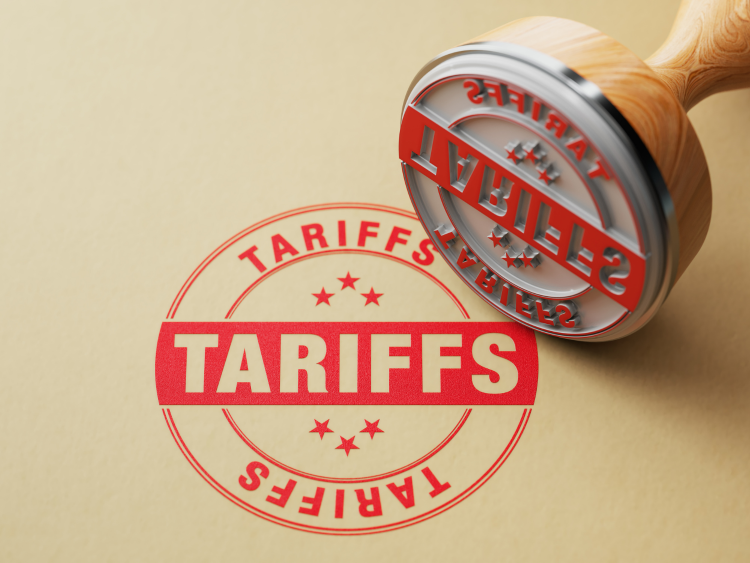
The energy storage industry has grown to become one of the integral components facilitating the world's transition toward more sustainable and resilient energy systems. In a world grappling with the impacts of climate change, renewable energy integration, and the reliability of grids, energy storage solutions become paramount. This paper attempts to give some insight into today's status of the energy storage market, covering the major trends and challenges but, most importantly, the vast array of opportunities that lie ahead.
I. The Growing Significance of Energy Storage:
A. Renewable Energy Integration:
It has been a revolutionizing factor in the energy sector by the advent of renewable sources of energy such as solar and wind. However, these sources are intermittent, hence posing challenges on grid stability. Energy storage systems store the excess energy during peak production time and release it during times of high demand, thereby satisfactorily solving the intermittency problem and allowing much greater integration of renewable energy into the grid.
B. Grid Resilience and Reliability:
It enhances grid resilience providing backup power during outages and stabilizing frequency fluctuations. This becomes particularly vital in regions prone to extreme weather events or areas with an aging energy infrastructure. As a result, worldwide, governments and utilities are increasingly recognizing the role of energy storage in having a reliable power supply.
II. Current State of the Energy Storage Market:
A. Technological Landscape:
Available energy storage technologies include lithium-ion batteries, pumped hydro storage, and flywheels; newer concepts are flow batteries and advanced compressed air energy storage. Lithium-ion batteries dominate the market because of rapid growth in electric vehicles and decreasing costs. That said, new technologies that offer better performance, durability, and safety are under active research, expanding the options.
B. Market Trends and Growth Drivers:
The future outlook on the outlook of the energy storage market is booming and these are clearly going to be high over the coming years. A number of important trends indicate greater adoption of behind the meter storage systems and the rise of virtual power plants, together with the potential role of artificial intelligence and machine learning in the optimization of energy storage operations. Principal drivers of market growth include government incentives, ambitious renewable energy targets, and growing awareness about the importance of environmental sustainability.
III. Opportunities in the Energy Storage Sector:
A. Innovation and Research and Development:
It is open territory for innovation and R&D in the field of energy storage. As the day goes by and technology changes, there is a continuing demand for evolution in materials, design, and manufacturing process to make energy storage systems more efficient and cost effective. Governments, research institutions, and private companies are investing heavily in R&D to unlock new possibilities and stay ahead in the competitive landscape
B. Grid-Scale Energy Storage:
Commercially viable grid-scale energy storage projects are even more viable in areas with high renewable energy penetration. Large scale battery storage facilities can provide essential grid services, including frequency regulation and energy arbitrage. Increasingly, together with decarbonization as one one of the major focal points in need of flexible grid solutions, grid-scale energy storage becomes one of the most important areas of investment and market growth.
C. Electrification of Transportation:
Electrification of transport, in particular fast-growing electric vehicles, is underway with robust growth in demand for advanced energy storage solutions. Growing adoption of EVs increases demand for high capacity and efficient batteries. Companies present in both the energy storage and auto sectors may derive synergies and explore opportunities for integrated solutions in clean and sustainable mobility.
D. Energy Storage in Developing Markets:
Developing markets represent new untapped opportunities for energy storage deployment. Most of these countries face unstable power supplies, and energy storage can become really transformative in solving most of the problems. The off grid and microgrid solutions powered by energy storage deliver access to electricity in remote areas and contribute to economic development.
E. Circular Economy and Recycling:
With the growing deployment of energy storage systems, environmental concerns about spent batteries have started to take over the limelight. Therefore, there stands an opportunity for companies to significantly benefit from the development of sustainable, circular models of manufacturing, using, and recycling batteries. Closed loop material systems for batteries, along with investment in recycling technologies, would reduce environmental exposure and open up new revenue streams.
IV. Challenges and Considerations in the Energy Storage Sector:
While the energy storage sector presents significant opportunities, it is essential to acknowledge the challenges and considerations that accompany its growth.
A. Cost Considerations:
Although the up-front costs of energy storage technologies have come down significantly, such reductions still represent a significant deployment barrier. Policies and financial mechanisms that would allow a broader range of applications must be explored at all government levels and within industry circles by making energy storage solutions more economically viable.
B. Regulatory Framework:
Energy storage operates under very intricate regulatory regimes that differ by region. Harmonization of the permitting, interconnection, and compensation regulations with very well spelt out frameworks is critical to an enabling investment environment. The governments and regulatory agencies will hence play a cardinal role in streamlining such processes and providing stability in this regime.
C. Technological Risks:
There are inherent technological risks associated with the development and deployment of emerging technologies in support of this growing energy storage industry. This places a premium upon rigorous testing, safety standards, and pilot projects to reduce risks and generate confidence among investors and end users.
D. Limited Public Awareness:
Public awareness of the benefits and possible applications of energy storage is still very low. The educational effort and awareness campaigns are of paramount importance to be implemented in order to let the public, policy makers, and business understand the role of energy storage in achieving a sustainable energy future.
Conclusion:
The energy storage sector is bound to register huge growth and transformation, as the world moves towards clean and sustainable energy practices. With technology advancing and continuing to support policies with growing awareness, the scope in the energy storage market also becomes very high. From grid scale projects to disruptive research, the sector has a myriad of ways in which stakeholders can contribute to a more resilient, more reliable, and less polluting energy future. These opportunities, therefore, beckon upon investors, policymakers, and industry players to enable them to drive this energy storage sector forward into a brighter, more sustainable future.
Trending Posts

Global Silver Nanoparticles Market
The global silver nanoparticles market was valued at $2.08 billion in 2020, and is projected to reach $4.1 billion by 2027, growing at a CAGR of ~17%

The Basic Pension Comes - Federal Cabinet Decides On the Pension Supplement
Financial security in old age is an issue that is causing stomach pains for more and more people in Germany. Low-wage earners fear the elderly. The ba

The Future of Artificial Intelligence
In recent years, the field of artificial intelligence (AI) has witnessed unprecedented growth and transformative advancements. As AI technologies

"LNG Bunkering" Here is something you must know!
In the current scenario of growing pollution, companies are trying to adapt more and more sustainable approach that not only gives eco-friendly result

Sailing into the future with Autonomous Ships
Autonomous Vehicles (AVs) are the uproar of this era. After airways, thanks to the companies like Tesla, that people are now getting used to see drive

Rising Demand For Uninterrupted Power Supply Is Expected To Drive The Power Rental Market
Todays world is totally reliant on electric power. There are many things which are not manageable without electricity. Power rental is a concept where

Rapidly growing IT industry coupled with the trend of bringing your own device (BYOD) is expected to provide new opportunities for growth of Cloud Collaboration
Cloud collaboration is the process of sharing and co-authoring the computer-based work through cloud technology

Fact check on UV Disinfection for COVID-19
Many regulatory authorities and bodies believe that UV disinfection technologies can play a role in a multiple barrier approach to reducing the transm

Vaccination: Vaccination Against Measles is Now Mandatory in Germany
The subject of compulsory vaccination has always heated peoples minds and caused emotionally charged discussions. The latest law in this area - the ob

The Global Ventilator Market Grows at a CAGR of 7.75 %
The Global Ventilator Market, which was at $688 million in the year 2016, is about to double by the year 2025, and reach a value of $1,347 million. Th
Recent Posts

Gold at Historic Highs in 2025: Strategic Implications of a Flight to Safety
Gold has reached unprecedented valuation levels in 2025, crossing $3,175 per ounce globally and nearing ₹94,000 per 10 grams in India—a 23% increase year-to-date

The Escalating U.S.-China Trade War: Strategic Implications for the Global Economy in 2025
In 2025, the U.S.-China trade war has reached an inflection point, introducing heightened complexity and volatility into the global economic system.

Tariffs & Trade: Key Trends, Policies, and Market Impact
A tariff is a tax imposed by a government on imported or exported goods. It is primarily used to regulate international trade by either encouraging domestic production or generating revenue for the government.

The Global Buy Now Pay Later (BNPL) Market: Growth and Opportunities
The global Buy Now Pay Later (BNPL) market has emerged as a revolutionary financial solution, transforming how consumers approach shopping and payments. Offering flexibility and convenience, BNPL allows consumers to make purchases and pay.

Global Motorhome Market: Growth and Forecast
The motorhome market has gained significant momentum over the past decade, driven by rising interest in outdoor tourism, evolving consumer lifestyles, and advancements in vehicle design and technology. As a preferred option for travelers seeking.

The Global Poppy Seed Market: Growth and Trends
Poppy seeds, derived from the opium poppy plant (Papaver somniferum), have been a vital component in global culinary, pharmaceutical, and personal care industries for centuries. The global poppy seed market is gaining traction due to its versatility.

Global Plant Breeding and CRISPR Plants Market
The global food industry is facing immense pressure due to rising population levels, diminishing arable land, and the impact of climate change. Innovations in plant breeding, particularly the use of CRISPR technology, are reshaping the agricultural .

Global Pheromones Market – Trends, Opportunities, and Forecast
The global pheromones market has witnessed significant growth, primarily driven by the rising demand for eco-friendly pest control solutions in agriculture. Pheromones, natural chemicals emitted by insects and other organisms to communicate.

The Role of Technology in Oil and Gas Risk Management
In an industry as dynamic and complex as oil and gas, risk management is crucial for ensuring operational efficiency, regulatory compliance, and safety. Risk management software has become an indispensable tool for companies in this sector.

Global Smart Grid Sensors Market
The global energy landscape is undergoing a significant transformation, with smart grid technologies at the forefront. Smart grid sensors, a critical component of modern energy grids, enable efficient monitoring, energy distribution.
.png)